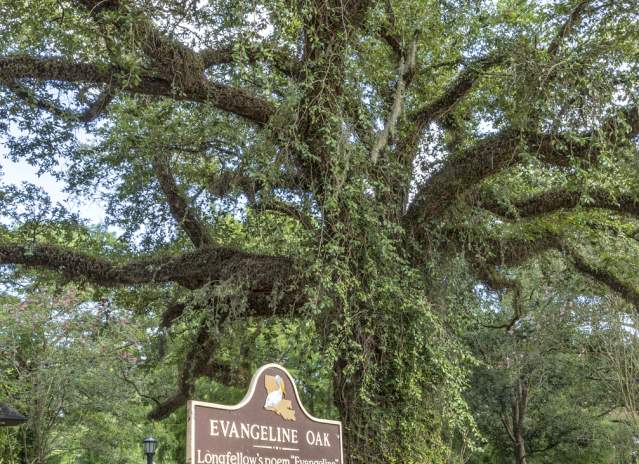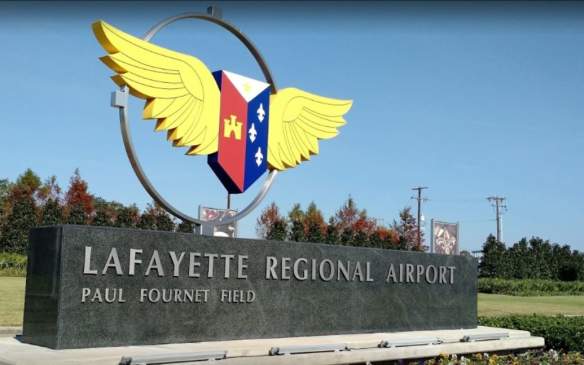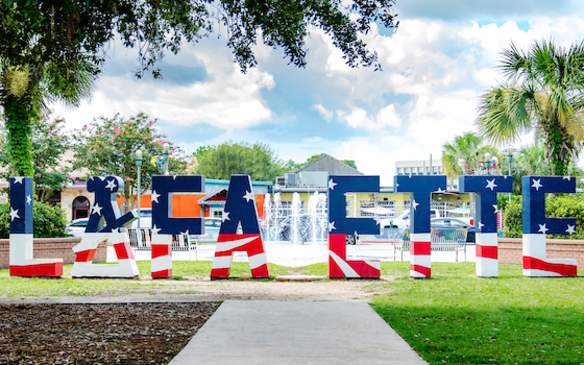Your browser is not supported for this experience.
We recommend using Chrome, Firefox, Edge, or Safari.
Legend Of Evangeline
"Our perception of the past is often an illusion, a mirage created as much by the biases of the creators of historical records as by the biases of historians themselves. While historians cannot divest themselves altogether of their personal outlook, molded as it is by environmental factors, they can at least attempt to pierce the veil of subjectivity surrounding their chosen topic."
“In Search of Evangeline: Birth and Evolution of the Evangeline Myth” by Carl A. Brasseaux
According to Longfellow
In 1847, Henry Wadsworth Longfellow wrote Evangeline as a tragic but fictional account of two lovers, Evangeline and Gabriel, who were separated on their wedding day during the expulsion of the Acadians from Acadie (present-day Nova Scotia, Canada). In 1755, the English Governor of Canada issued an ultimatum to the Acadians to swear allegiance to the British Crown and forsake their Catholic faith or be exiled. They refused and were forced to leave behind everything and be herded onto ships without any regard to family ties.
Upon her arrival in Louisiana, Evangeline learned that Gabriel was in the Attakapas district. She began her journey there, but soon found that Gabriel, in a grief-stricken state, had left the region. It was here that she began a lifelong search for her lost love as she wandered through the American frontier. She eventually gave up her search and joined the Sisters of Mercy in Philadelphia, dedicating her life to the service of others. Years later, she found Gabriel who was on his deathbed and died in her arms. She died soon after.
Longfellow apparently heard the story of Evangeline and Gabriel from Rev. Horace Lorenzo Conolly at a dinner party with Longfellow's friend Nathaniel Hawthorne. Though Longfellow consulted Thomas C. Haliburton's Historical and Statistical Account of Nova Scotia, he did not want his poem to be a documentation of historical events.
Other Versions
One of the first Louisiana writers to re-tell the tale was Sidonie de la Houssaye, who used the story in her 1888 novel, Pouponne et Balthazar, which details the story as a family legend handed down by her grandmother. In this story, Pouponne Theriot is separated from her fiancé Balthazar Landry during the deportation. Through the period of exile and resettlement, she remains faithful to her betrothed while caring for her fiancé's elderly father. Balthazar, who has attained the rank of Captain in the French army, returns with an education and the pair are wed.
The best known version of the Evangeline story is Acadian Reminiscences: The True Story of Evangeline, a novelette by Felix Voorhies, a district judge and member of the Louisiana House of Representatives. Voorhies' story, published in 1907, is about Emmeline Labiche and Louis Arceneaux, the "real" Evangeline and Gabriel. According to this version, Emmeline and Louis tried to flee the village of St. Gabriel in old Acadie before the deportation, but they were caught by the British and were separated. Emmeline was sent to Maryland and came to Louisiana with a group of Acadians led down the Tennessee and Mississippi Rivers by Rene LeBlanc, the former patriarch of St. Gabriel. According to Voorhies, Emmeline and Louis met again beneath the oak tree by Bayou Teche in St. Martinville. By that time, he was married to another. Emmeline lost her sanity, withered away and died.
The Truth Behind the Myth
Until the 20th century, it was widely accepted that Evangeline and Gabriel were fictional characters. The story increasingly came to be seen as a thinly veiled historical account. In 1988, Carl Brasseaux, assistant director of the Center for Louisiana Studies at the University of Southwestern Louisiana, released a book that put to rest the story of Evangeline without mocking the tradition from which it came. "Longfellow wrote a beautiful poem, but poetry is not history," said Rev. Jean-Marie Jammes, once a pastor at St. Martin de Tours Church in St. Martinville. "She could have existed. There was nobody to write history except the pastor of the church who recorded baptisms, marriages, and funerals." And since history is defined as recorded past events, none of these stories can be authenticated. Even if Evangeline, or Emmeline Labiche, did not exist, there were plenty of women who lived, suffered and died like she did. It is likely that the legend perseveres because of its romantic appeal and its testimonial to the enduring spirit of the Acadian people.
Inspiration Journal
Lafayette's blog showcasing the food, music, culture and history at the heart of Cajun & Creole Country.
See All PostsFarmers Markets in Acadiana
Farmers markets in Lafayette and the surrounding areas offer a vibrant glimpse into the region's rich agricultural traditions and cultural diversity. From the fields of the…
Lafayette Weekly
A weekly curated playlist by local musician Philippe Billeaudeaux featuring music by Lafayette, LA musicians with a weekly rundown of live music happening in and around the area…
Cajun Music
Cajun music is a central component and marker of Cajun identity and culture in southwestern Louisiana. Largely accordion and fiddle-based and primarily sung in vernacular French…
Cajun & Creole Instruments: Accordion
A relatively recent invention, the bellows-driven, vibrating reed squeezebox known as the accordion, was first manufactured in Germany and later in Russia in the 1820s. It is…
Getting to Lafayette
The city of Lafayette, LA is located in the center of Lafayette Parish at the intersection of I-10 and I-49 between New Orleans and Houston and only 35 miles north of the Gulf of Mexico.








